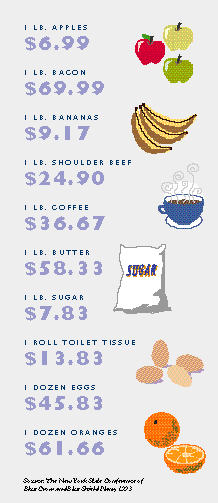How to Save on Prescription Drugs
Until recently, when most people got a prescription they simply took it to their corner drug store to have it filled. But prices of prescription drugs have sky-rocketed, adding to already prohibitive health-care expenses. So even if your health insurance covers medications, you may have co-payments or hefty deductibles to meet. With some prescription drugs prices exceeding $5.00 a pill, it pays to trim costs wherever possible, and with a little consumer savvy you can. Here are some tips to help you save:
Generics. Though not always available or suitable, a generic equivalent of a drug often costs 30 to 50 percent less than the brand name. Ask your physician if a generic can be substituted.
Know what your medical insurance or managed health care plan covers. Your health insurance plan may cover only the costs of generic drugs when they are suitable alternatives to brand name medications. You may have to pay the difference between a generic and a brand name drug. Also, some managed health care plans offer medications to their members at much lower prices than regular drugstores.
Therapeutic substitution. Ask your doctor if it’s possible to prescribe a cheaper member of the same class of drug. In many instances, different agents have virtually identical clinical effects.
Price comparison. Shop around for a pharmacy that offers the best value for your needs. Some drug stores, for example, offer cheap prices but no services, such as consulting with the pharmacist or home delivery. It may even be worthwhile to compare prices on a prescription basis, since stores often have specials on popular drugs.
Order by mail.Consider buying prescription drugs from mail-order pharmacies, which now account for about five percent of the total prescription market. Mail order firms often charge less than local druggists. One caveat: They can’t fill prescriptions as quickly. So they are perfect for patients taking medication for long-term conditions, such as high blood pressure or heart disease, in which timeliness is not such an issue. Some resources that offer discounted mail-order drugs: Pharmail, 800-237-8927; Action Mail Order, 800-452-1976; Medi-Mail, 800-331-1458; Family Pharmaceuticals, 800-922-3444; and the American Association of Retired Persons (AARP), 800-456-2279.
Buy in bulk. If you’ll be on a drug for a month or more, ask your physician if it’s appropriate to order a bulk supply. It costs less than buying by the week.
Manufacturer aid. Most major drug companies now have programs to give drugs to patients who have neither the insurance nor the means to pay for the drug they need. The details of such programs vary widely depending on the manufacturer, but all of them require that the doctor put in the application for you. Doctors unfamiliar with these programs, can call the Pharmaceutical Manufacturers Association (202-835-3400) and ask for its guide to these programs, which is only available to physicians.
Here’s what you’d pay today for a sampling of items if grocery prices had increased at the same rate as health-care costs since the 1930’s:





